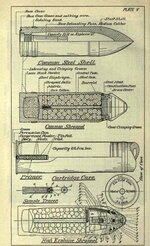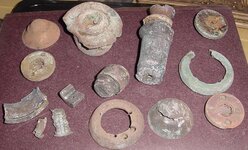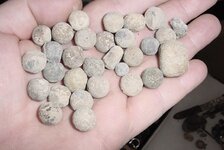- Jun 9, 2013
- 6,009
- 8,506
- Detector(s) used
- White XLT Spectrum E-Series
- Primary Interest:
- Metal Detecting
Back in the mid-1950's my Grandfather gave my mother and father an old home in Constantine MI. My late father said after they moved into the home he was going through the attic and found these 2 old artillary shells. And they do look OLD. My father told me years later when I asked about them that an old army General or Captain (?) from WW1 lived there and he must have brought them home. Sooooooo…. with that said can anyone here tell me what era these two shells might have come from? If that story is true then probably WW1 but I've been wondering lately if this is correct and what type shells they are. They've just been sitting on top of my gun cabinet for years. There's no room for them on the inside. Oh…. and yes their disarmed.
About the shells: Their larger than my 300 mag. shells (kidding). They weight about 7-8 pounds. Their 11" long and 3" in diameter. Around the nose cone both say MODEL 1907 M. The numbers 1 thru 21 are stamped evenly around the nose. One shell around the lower brass nose cone has stamped: B H MODEL 1907 M 73 9 51 16 LOT 26 17. The other has SCDVILL MODEL 1907 M LOT 78 6 A 109 17. The nose cones appear to be able to be "dialed in" for range or timed explosion. And both appear to have copper or brass base mounted rifling. The darker one has NOT been painted but why it's darker…. I do not know.
I'm hoping there might be someone here who might know something about old artillery or know where to look. Are they worth anything besides scrap metal? I'd just like to learn more about them and thanks for any help, advise or knowledge….. Brad
About the shells: Their larger than my 300 mag. shells (kidding). They weight about 7-8 pounds. Their 11" long and 3" in diameter. Around the nose cone both say MODEL 1907 M. The numbers 1 thru 21 are stamped evenly around the nose. One shell around the lower brass nose cone has stamped: B H MODEL 1907 M 73 9 51 16 LOT 26 17. The other has SCDVILL MODEL 1907 M LOT 78 6 A 109 17. The nose cones appear to be able to be "dialed in" for range or timed explosion. And both appear to have copper or brass base mounted rifling. The darker one has NOT been painted but why it's darker…. I do not know.
I'm hoping there might be someone here who might know something about old artillery or know where to look. Are they worth anything besides scrap metal? I'd just like to learn more about them and thanks for any help, advise or knowledge….. Brad
Attachments
Upvote
1



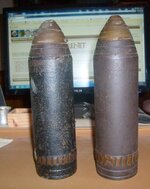
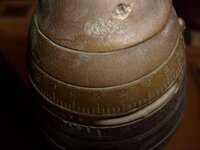
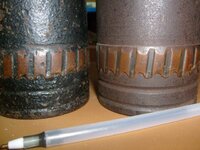
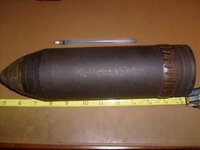
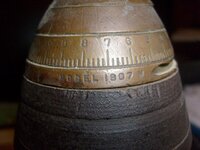
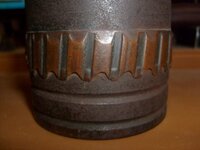
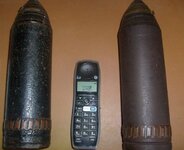
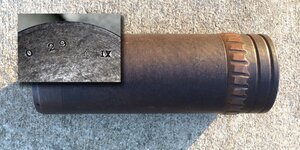
 ? SO what do you know about yours
? SO what do you know about yours